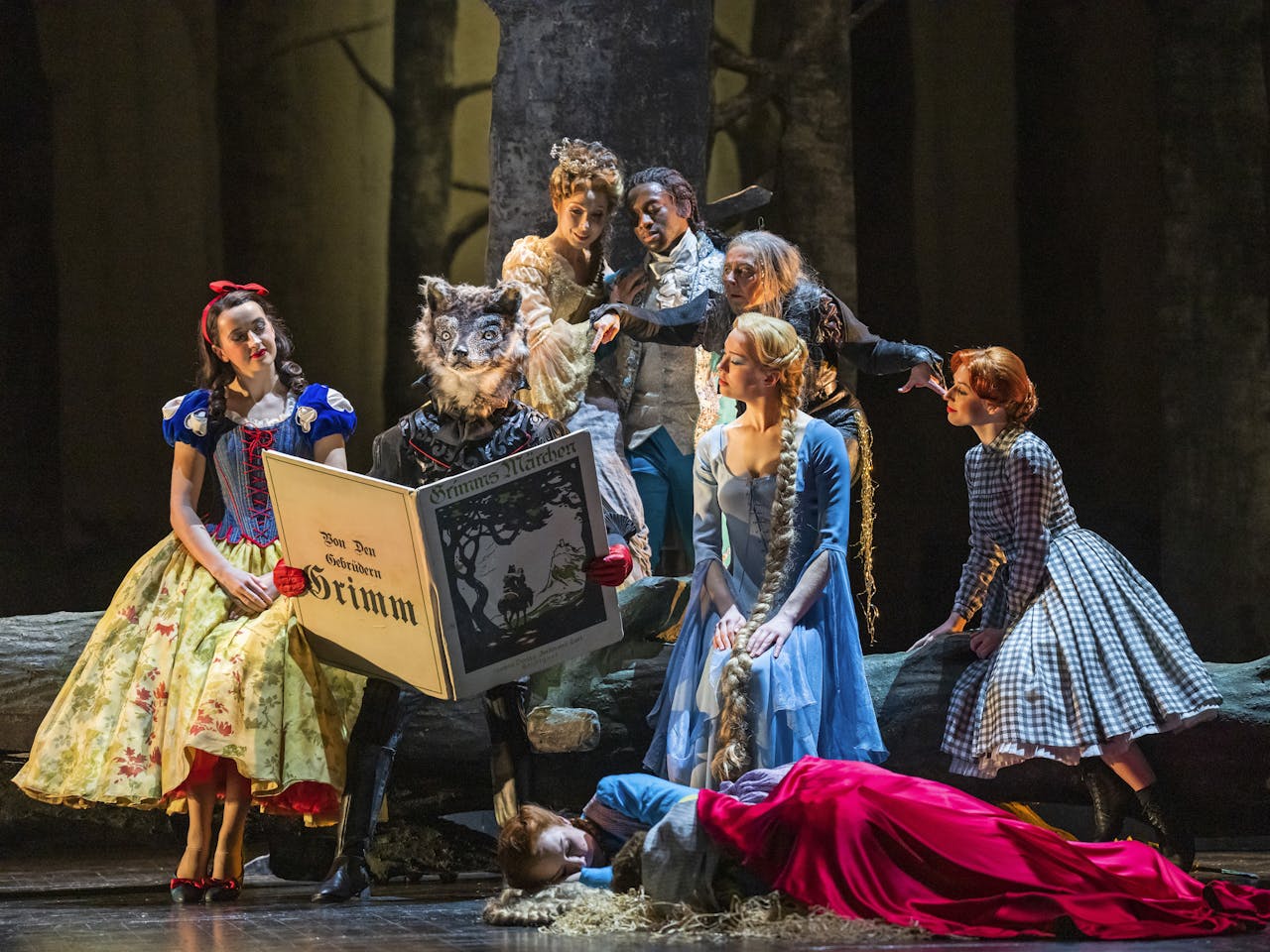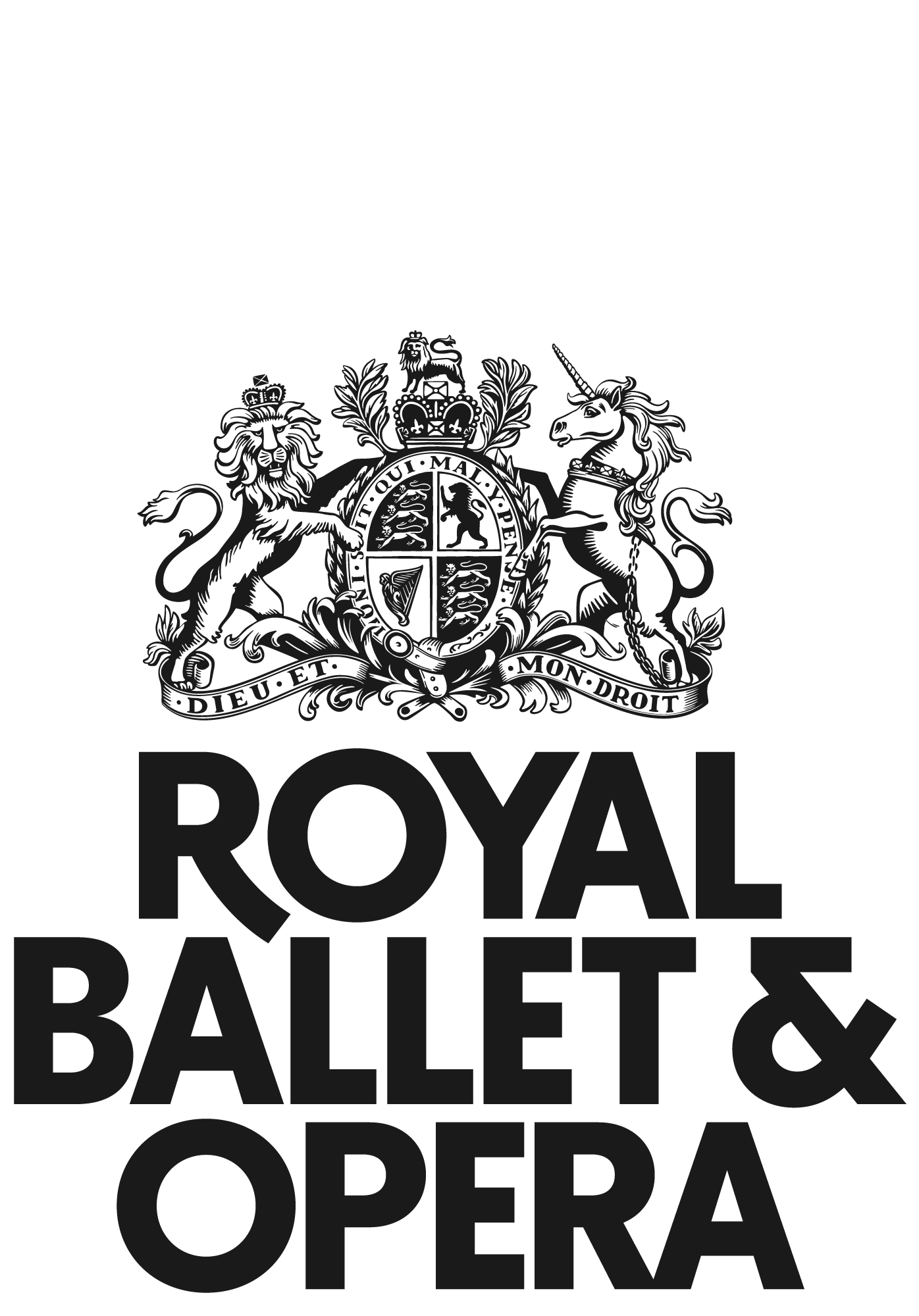Hansel and Gretel
Hansel and Gretel
Hansel and Gretel
A delicious treat for all the family returns this Christmas.

The magic of the Grimm tales comes to life in this mischievous production. A fairy tale adventure for all.
The magic of the Grimm tales comes to life in this mischievous production. A fairy tale adventure for all.
San Francisco Opera
Royal Ballet and Opera Principal Julia Rausing Trust
The performance of Hansel and Gretel on Sunday 22 December 2024 will be family friendly. Find out more about these performances.
BEWARE THE WOODS...

Sent into the woods to look for strawberries, the hungry Hansel and Gretel are about to embark on a fantastic adventure. As they fall asleep, a fairy-tale world comes to life around them. But the mysterious forest is not always safe for children, and little do they know, something darkly delicious awaits them when they wake... They can’t believe their luck when they come across an edible house made of chocolate – but their host, a witch in disguise, has an insatiable appetite – for young children! Brother and sister must use all their cunning if they are to survive – and break the charm that has captured many children before them.
Background
Kate Lindsey and Heidi Stober (making her debut with The Royal Opera) star as Hansel and Gretel in Engelbert Humperdinck’s enchanting opera. Drawing out the magic of the score is conductor Giedrė Šlekytė, who also makes her debut. Antony McDonald’s witty and imaginative production is the perfect treat for families and operatic newcomers alike.
A Grimm history
Brothers Jacob Ludwig and Wilhelm Carl Grimm were distinguished academics and folklorists. Through their work, preserving and transcribing the oral tradition of folk tales, they preserved much precious material from being lost. Their first publication, in 1812, of Kind und Hausmärchen (Child and Household Tales), featured the story of Hansel and Gretel, and was such a success that they produced several more collections, inspiring similar story-gathering efforts across Europe.
Catchy tunes throughout
Humperdinck's music combines the rustic charm of folksong with majestic orchestral scoring, with highlights including the 'Evening Prayer', the Witch's aria, and the Dew Fairy's song. The opera dates from a time in history when many composers were seeking an ‘authentically German’ form of opera. In Hansel and Gretel, Humperdinck uses real folk songs, and transforms them in a similar way to the ‘leitmotifs’ (or recurring musical fragments) to those found in Richard Wagner’s operas. Listen out for the catchy tune of the children’s dance, which returns later in the Witch’s ride. Humperdinck’s orchestration also transports us to the German forest of olden times, with prominent melodies played by the horns, recalling hunting traditions.
Trouser-roles: an operatic tradition
The role of Hansel is performed by a female singer with a mezzo-soprano voice. This is an operatic tradition that recalls the 17th-century origins of the art form, when castrati (castrated male performers) would sing high-pitched roles. As fashions changed, and castrati were no longer in favour, composers still wrote high-pitched male roles, and women stepped in, performing en travesti, or ‘trouser roles’, as they are sometimes called.
An opera for children
Engelbert Humperdinck’s sister, Adelheid Wette, wrote the libretto to the opera, but it began life as an informal piece, for amateur performance at home. Initially, Adelheid asked her brother to set a number of songs for a Hansel and Gretel play that she had written for her children to perform in their living room. This was then expanded into a singspiel (a play with music), and finally, it was through-composed, resulting in the non-stop musical feast that audiences know and love today.
Cast and Creatives
Creatives

Access
There is lift access and step-free routes to over 100 seats in the Stalls Circle, Balcony and Amphitheatre. There are 10 steps or fewer to some seats in the Stalls Circle, Balcony, Amphitheatre and the Donald Gordon Grand Tier. All seats in the Orchestra stalls are accessed by 9 steps or more. A handheld bell is rung by Front of House staff to signal guests to take their seats before a performance. The bell is loud and can be startling. The bell is rung approximately ten minutes before the show starts and at each interval.
We have an assistive listening system available to use. This opera is sung in English with English surtitles. Captions and translations will be displayed on screens above the stage and around the auditorium. A Visual Story for Hansel and Gretel is available here. An Audio Described introduction is available on the Royal Ballet and Opera SoundCloud.
Join our Access Scheme for priority access performance tickets and to personalise your account for your access requirements.

Donate
The Royal Ballet and Opera is a charity and relies on your support. No matter the size, every gift is critical to our work and helps us to secure the future of ballet and opera.
Your donation will enable us to keep extraordinary work on our stages, inspire the next generation and support the Royal Ballet and Opera's community of artists, technicians and craftspeople.
Culture, crafted by contribution
Royal Opera House Covent Garden Foundation, a charitable company limited by guarantee incorporated in England and Wales (Company number 480523) Charity Registered (Number 211775)
